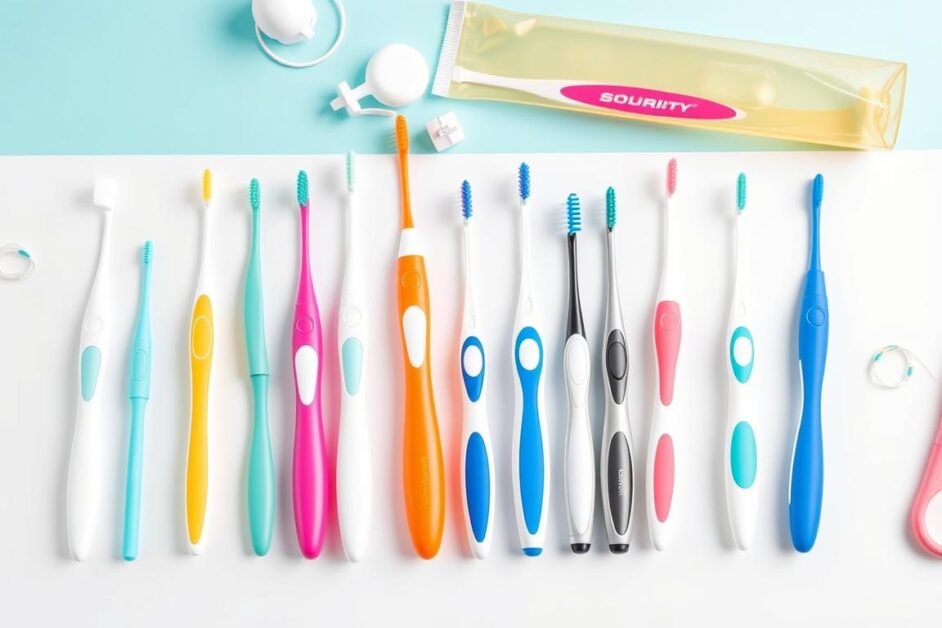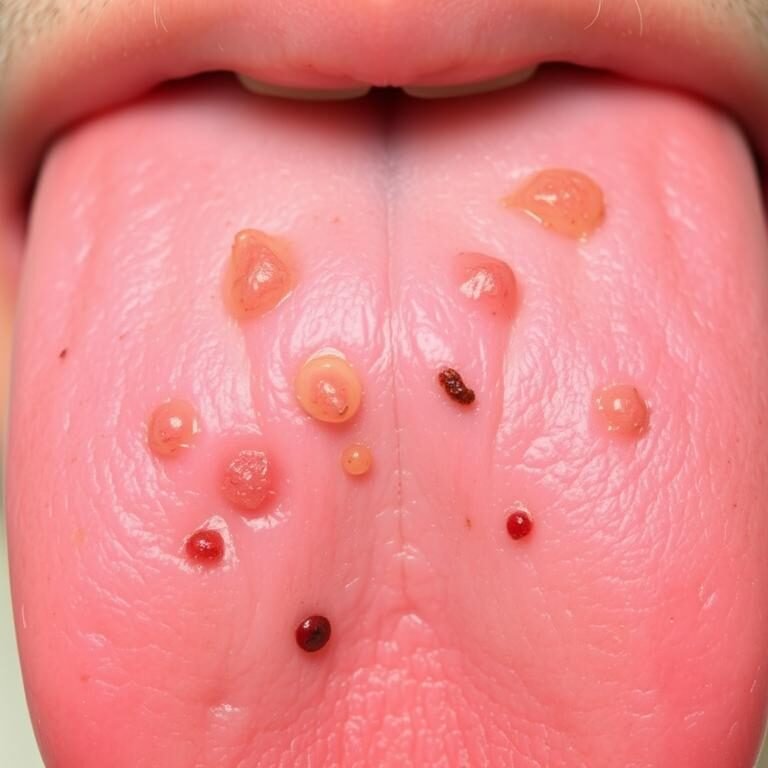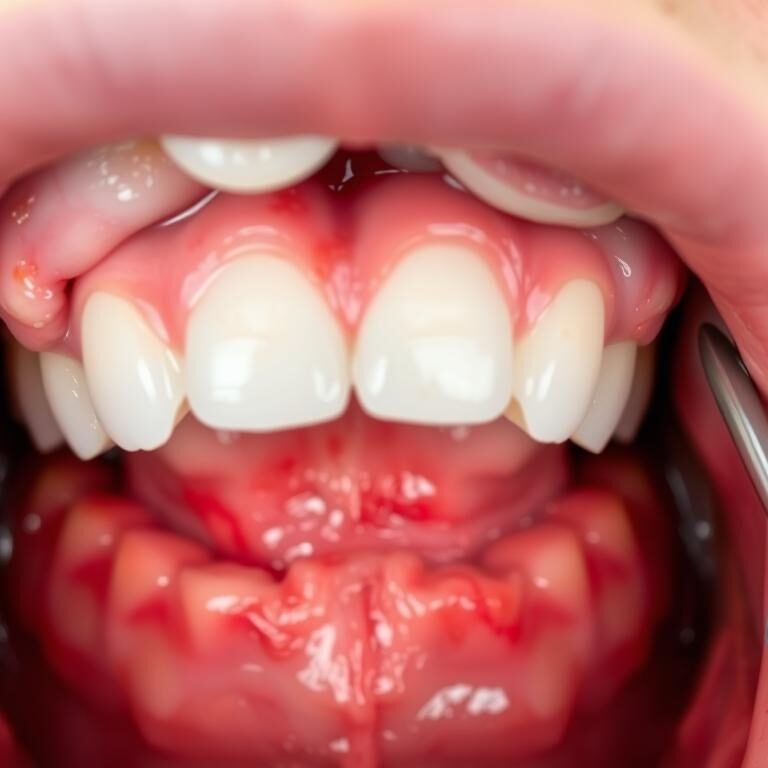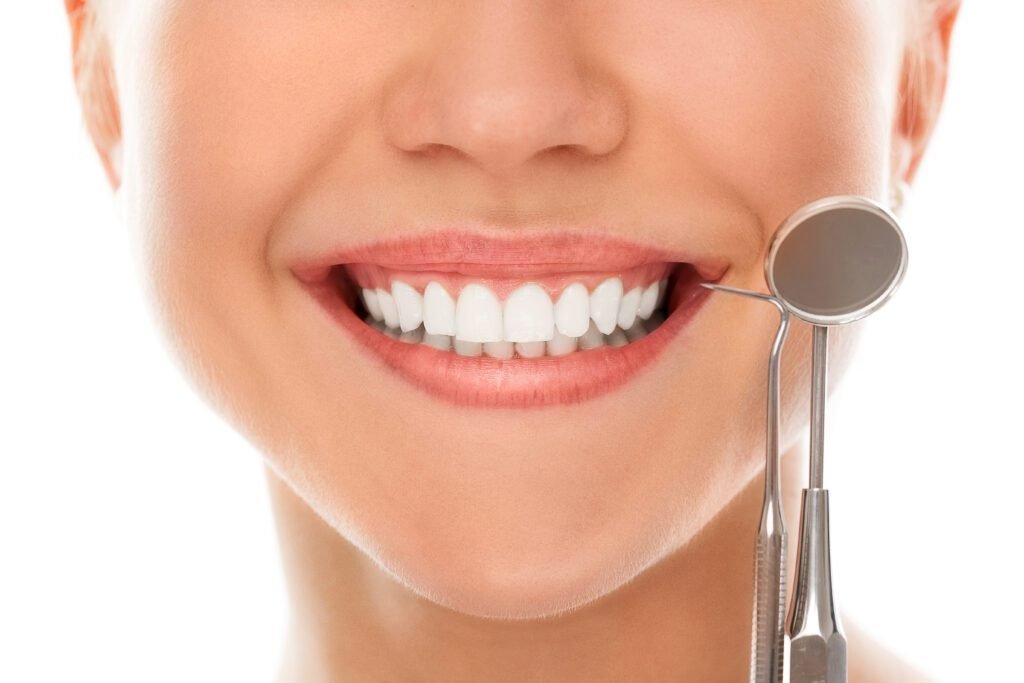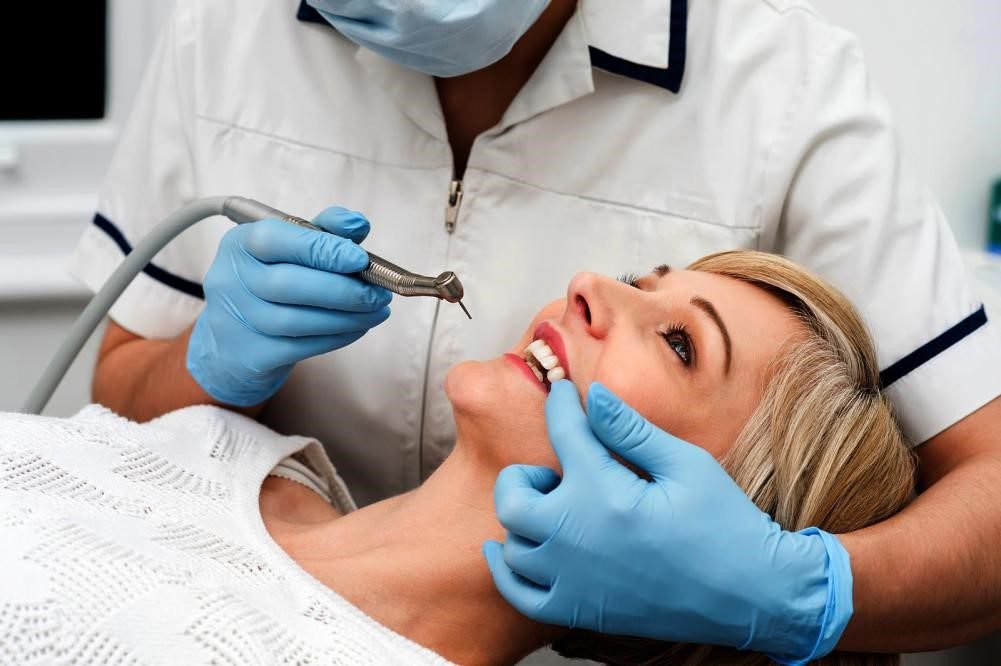Imagine you’ve just eaten a great meal and feel full. But then, you notice food stuck between your teeth. This is when you realize how crucial interdental cleaning is. The right interdental brushes can make a big difference in your dental care.
Studies show that using these brushes can cut the risk of gum disease by half. Yet, only about 30% of adults use them. This guide will show you how to pick the best interdental brushes for you. It’s not just about clean teeth; it’s about keeping your gums healthy and your smile bright for longer.
Understanding Interdental Brushes
Interdental brushes are key for keeping your mouth clean. They fit between your teeth to remove plaque and food bits. Knowing about interdental brushes helps you pick the right tools for your dental care.
What are Interdental Brushes?
Interdental brushes are small, round tools for cleaning between teeth. They come in different sizes and shapes. They’re easier to use than dental floss, great for people with wide gaps or dental appliances.
How Do They Work?
To use interdental brushes, gently push them between your teeth until they touch the gum. The bristles clean away plaque and food. This makes your mouth feel cleaner, as they reach spots toothbrushes can’t.
Learning the right way to use them is important. It helps you get the most out of these brushes.
Differences Between Interdental Brushes and Floss
Interdental brushes and floss have big differences. Flossing can be hard, mainly for those with tight spaces. But interdental brushes are easier to use and clean better.
They’re also better for cleaning big spaces between teeth. This makes them a great choice for many people.
Benefits of Using Interdental Brushes
Interdental brushes are great for keeping your mouth clean. They are designed to get into tight spaces. Using them daily can really improve your oral health.
Improves Gum Health
These brushes are great for your gums. They stop plaque from building up, which can cause gum diseases. Studies show they reduce gum irritation and inflammation.
They are better than regular floss at stopping gum bleeding. This makes your gums healthier.
Removes Food Particles Effectively
Interdental brushes are good at getting rid of food stuck between your teeth. Regular use keeps your mouth cleaner. This means less plaque and a healthier mouth.
Reduces Bad Breath
Bad breath can be a problem. Interdental brushes help by removing food and bacteria from hard-to-reach places. Users often notice their breath smells fresher.
Routine use of interdental brushes results in an average 40% improvement in breath freshness.
| Benefits | Impact on Oral Health |
|---|---|
| Improves Gum Health | Reduces plaque buildup and lowers risk of gum diseases. |
| Removes Food Particles Effectively | Enhances cleaning of interproximal areas, improving overall hygiene. |
| Reduces Bad Breath | Decreases bacteria levels and enhances breath freshness. |
Types of Interdental Brushes Available
Interdental brushes are key for keeping your mouth clean. They reach spots that regular toothbrushes can’t. Knowing the different types helps you choose the right one for you.
Standard vs. Flexible Brushes
Standard brushes are sturdy and good for big gaps. They clean well in wide spaces. Flexible brushes are more versatile. They bend to get into tight spots, great for gums or sensitive teeth.
Varying Sizes and Diameters
Interdental brushes come in sizes from 0.6 mm to 6 mm. Finding the right size is important for cleaning. Too small, and they won’t clean well. Too big, and they might hurt.
Using them regularly helps you figure out what size you need. For more help, check out dental websites.
Reusable vs. Disposable Options
Choosing between reusable and disposable brushes affects convenience and cost. Reusable brushes are good for the planet and last longer. They have replaceable bristles that last two to four weeks.
Disposable brushes are easy to use and cost-effective. They work well if used regularly and correctly.
Who Can Benefit from Interdental Brushes?
Interdental brushes are great for many people. They are made to help with specific dental needs. Knowing who they help best can lead to better oral health.
People with Braces or Dental Appliances
Those with braces find it hard to keep their teeth clean. Flossing can be tough with all the metal. But, interdental brushes are perfect for getting around braces. They clean deep and help keep gums and teeth healthy.
Individuals with Periodontal Disease
People with periodontal disease need to keep their gum pockets clean. Gum interdental brushes are made for this. They help stop plaque from building up. Using them regularly can help control the disease.
Anyone Seeking Better Oral Hygiene
Even if you don’t have dental issues, interdental brushes can still help. They work well with brushing to remove plaque and fight bad breath. Using them can improve your oral health for the long term. For more tips on oral care, check here.
Common Dental Conditions Treated
Regular dental care is key to preventing many dental problems. Issues like gingivitis, tooth decay, and plaque buildup can be managed with the right cleaning. Interdental brushes are great for reaching areas that regular brushing can miss.
Gingivitis and Periodontitis
Gingivitis is an early gum disease that causes gum inflammation. It’s often due to plaque that turns into tartar if not cleaned. Using interdental brushes helps fight gingivitis by reducing plaque, which keeps gums healthy. If not treated, gingivitis can turn into periodontitis, a serious condition that harms tooth support.
Tooth Decay
Tooth decay happens when bad bacteria in the mouth eat away at tooth enamel. Using interdental brushes helps stop tooth decay. They remove food and plaque from between teeth, reducing cavity risk in these areas.
Plaque Buildup
Plaque is a sticky film of bacteria that can cause many dental problems. Regular use of interdental brushes can cut down plaque buildup. This keeps your mouth clean and prevents gum disease and tooth decay.
How to Choose the Right Size of Brush
Choosing the right size of interdental brush is key for good dental health. You need to measure interdental space and know your options. A brush that fits well cleans well without hurting your gums.
Measuring Interdental Space
To find the right size, start by measuring interdental space with a small mirror. Try an interdental brush in the gap to see if it’s comfortable. A brush that’s too big can hurt, and one that’s too small won’t clean well.
A Guide to Sizing Options
Interdental brush sizes range from 0.4mm to 1.5mm. Here’s a quick guide:
| Brush Size | Diameter (mm) | Color Code |
|---|---|---|
| Size 0 | 0.4mm | Pink |
| Size 1 | 0.5mm | Red |
| Size 2 | 0.6mm | Blue |
| Size 3 | 0.7mm | Green |
| Size 4 | 0.8mm | Black |
| Size 5 | 1.0mm | Purple |
| Size 6 | 1.2mm | Yellow |
| Size 7 | 1.4mm | Orange |
| Size 8 | 1.5mm | Dark Blue |
Trial and Error: Finding Your Perfect Fit
Finding the perfect fit might take some trial and error. Start with a few interdental brush sizes to see what works best. A dental hygienist can help find the right one for you. Regular dental visits can help you find the best size and keep your gums healthy.
Recommended Brands in the Market
Looking for the best interdental brush brands? Several top choices are known for their effectiveness and making users happy. Brands like TePe, GUM, and Oral-B are leaders with features for different needs.
Popular Brands Overview
TePe interdental brushes are famous for their color-coded system. This makes picking the right size easy. They have sizes from 0.4 mm to 1.5 mm, fitting all gaps between teeth. GUM and Oral-B also offer great options for different dental needs.
Unique Features of Each Brand
- TePe Interdental Brushes: They have an ergonomic design for comfort and extra-soft bristles.
- GUM Interdental Brushes: They have a strong handle and flexible design for the mouth’s shape.
- Oral-B Interdental Brushes: They have high-quality bristles and a design for better plaque removal.
Customer Ratings and Feedback
Customers love TePe interdental brushes for their comfort, effectiveness, and ease of use. They say these brushes clean well and reduce gum irritation more than regular floss. The Icon Optim Standard brushes get a 9/10 for cleaning and 8/10 for ease of use, showing high satisfaction. Curaprox brushes are also popular, rated 8/10 for cleaning but slightly less comfortable than TePe.
Product Comparison: Cost Analysis
Looking into the cost of interdental brushes shows a wide range of choices. These choices cater to different budgets and needs. It’s important to pick a brush that fits your budget and dental needs.
Price Range for Interdental Brushes
The prices of interdental brushes vary a lot. This depends on the brand, materials, and features. Prices start at $3 for basic brushes and go up to over $15 for high-end ones with extra features. Knowing this range helps you choose wisely based on your budget.
Budget-Friendly Options
If you want to save money, look at budget-friendly interdental brushes. These are good for keeping your teeth clean without spending a lot. Brands like Colgate and Oral-B offer affordable options that work well.
Premium Choices Worth the Investment
Premium interdental brushes offer advanced features and better cleaning. Brands like TePe and Curaprox make brushes with ergonomic designs and quality materials. They might cost more upfront, but they last longer and clean better.
When you compare the costs and benefits of different brushes, you can choose the best one for you. A study shows that picking the right dental products is key for good hygiene and treatment results.
| Brush Type | Price Range | Features |
|---|---|---|
| Budget-Friendly | $3 – $5 | Basic design, effective cleaning |
| Mid-Range | $6 – $10 | Improved ergonomics, varying sizes |
| Premium | $11 – $15+ | Advanced materials, unique features |
Product Comparison: Features
Choosing the right interdental brushes is key. Look for designs that make cleaning easier and more effective. The materials used and the handle types can greatly improve your experience.
Ergonomic Design Considerations
Ergonomic designs fit well in your hand, reducing strain. Contoured handles are a must. They help you hold the brush naturally, making it easy to clean between teeth.
Many brands focus on ergonomics. This means even those with limited dexterity can keep their teeth clean without discomfort.
Materials Used in Brush Construction
The materials in interdental brushes are crucial. Soft nylon bristles are gentle on gums but tough on plaque. Some brushes have antibacterial bristles to fight bacteria.
For tougher plaque, some brushes have metal-coated cores. This boosts their cleaning power.
Handle Types: Grip and Comfort
The handle type is important for both comfort and effectiveness. Textured grips give you better control. Long handles are great for reaching between teeth.
Adjustable angles make it easier to clean tight spaces. This helps you keep your teeth clean without straining.
| Brand | Ergonomic Design | Materials Used | Handle Type |
|---|---|---|---|
| GUM Proxabrush | Contoured handle for better grip | Soft nylon bristles | Textured with an angled design |
| Curaprox CPS | Ergonomically designed for ease of use | Antibacterial bristles | Flexible handle for adjustable angles |
| TePe Angle | Designed for comfort and control | Durable nylon bristles | Long handle with excellent grip |
Reviews of Top Interdental Brushes on Amazon
Looking at what people say about interdental brushes can really help you understand their benefits. Here, we’ll share some top picks from Amazon. We’ll talk about what makes them special and what users think of them.
Product 1: GUM Proxabrush
The GUM Proxabrush is a favorite among those searching for the best interdental brushes on Amazon. It has special triangular bristles that get rid of plaque and food bits well. People love how it cleans hard spots without hurting their gums.
“I’ve switched to the GUM Proxabrush and the difference is amazing! My gums feel healthier, and I no longer have issues with food getting stuck between my teeth.” – Satisfied Customer
Product 2: Sulcabrush
If you have tight spaces between your teeth, the Sulcabrush is a great choice. It has a narrow, angled head that makes it easy to get into tight spots. It’s a top seller on Amazon because it’s good at cleaning hard-to-reach areas. Users like how gentle it is, which helps avoid hurting your gums.
“I was struggling to find the right interdental brush until I found the Sulcabrush. It fits perfectly, and my dentist noticed the improvement in my gum health.” – Happy User
Product 3: TePe Interdental Brush
The TePe Interdental Brush is also highly praised on Amazon. It comes in different sizes, so you can pick the one that works best for you. People like how strong it is and how easy it is to hold, making it simple to use every day.
“TePe has made a real difference in my oral care routine. Easy to use and highly effective!” – Enthusiastic User
Usage Tips for Interdental Brushes
Using interdental brushes can really boost your oral hygiene. Following some key practices helps you get the most out of them. This includes knowing how to use them right and keeping them in good shape.
How Often to Use Them
The American Dental Association says to use interdental brushes at least once a day. If you have braces, dental bridges, or retainers, you might need to brush more often, like after meals. Using these brushes before your regular brushing can help a lot with plaque and gum health.
Best Techniques for Cleaning
Using them correctly is key. First, pick the right size for each gap between your teeth. Then, gently put the brush in and move it back and forth without too much pressure. Watching yourself in a mirror can help you get better at it. For the best results, use these brushes before your regular brushing.
Maintaining Your Brushes
Keeping your interdental brushes in good shape makes them last longer and work better. Rinse them well after each use to get rid of any dirt. Change them out when the bristles start to look worn or misshapen, usually every week. This keeps them good at cleaning those tricky spots.
| Tip | Details |
|---|---|
| Frequency | Use at least once daily; more frequently for dental hardware. |
| Technique | Insert gently and move the brush back and forth. |
| Maintenance | Clean after each use and replace weekly or if worn. |
How to Store and Care for Interdental Brushes
Caring for interdental brushes is key to good oral hygiene. Storing them right and cleaning them often keeps them working well. This part talks about the best ways to store, clean, and replace these brushes for a strong dental care routine.
Proper Storage Solutions
Find a dry, clean spot to store your interdental brushes. Don’t put them in damp places or closed containers. A ventilated holder helps them dry out after use. This keeps them clean and prevents bacteria from growing.
Cleaning and Sanitizing Tips
Cleaning and sanitizing your interdental brushes is vital for your teeth. Rinse them well after each use to get rid of food and dirt. For a deeper clean, soak them in mild soap and water.
Sanitize them by soaking in alcohol for a few minutes. This kills bacteria and makes your oral care routine better.
When to Replace Your Brushes
It’s important to replace your interdental brushes regularly. Dental experts say to do this about once a week, or sooner if the bristles look worn. Watch for frayed or discolored bristles, as this means it’s time for new ones.
Checking your brushes regularly helps ensure they clean your teeth well. This keeps your dental care routine effective.
Dental Professionals’ Recommendations
Dental experts say interdental brushes are key for good oral health. They share tips and methods to make cleaning between teeth better.
Dentists’ and Hygienists’ Insights
Dentists stress that cleaning between teeth daily is crucial. Regular toothbrushes miss out on cleaning two-thirds of each tooth. This leaves teeth between gaps open to cavities and gum problems.
Interdental brushes, like those in the CURAPROX CPS prime range, fill these gaps. They help prevent gum inflammation and periodontitis.
Dentists use a special IAP probe to check the size of gaps. CURAPROX has a color system for easy brush size selection. Studies show interdental brushes improve gum health better than flossing.
Importance of Professional Advice
Getting advice from dentists helps pick the right tools and methods. Hygienists recommend using different sizes of brushes for various gaps. Regular use of these brushes can improve gum health and help tissue grow.
At first, some bleeding might happen. This usually means there’s inflammation from plaque. But, using them regularly leads to better results over time. Experts agree that interdental brushes clean up to 40% more than toothbrushes alone, making them essential for oral care.
The Future of Interdental Cleaning
Dental hygiene is changing, focusing on better cleaning methods for everyone. This change shows how important interdental cleaning’s future is. It’s about new strategies and products that make oral care better. Health-conscious people want more than just old ways of cleaning.
Innovations in Interdental Brush Design
New brush designs are more comfortable and work better. They use smart tech to track cleaning and remind you. Key improvements include:
- Flexible heads for easier access to hard-to-reach areas.
- Antibacterial coatings on bristles to enhance hygiene.
- Eco-friendly materials aimed at sustainable practices.
- Color-changing indicators that signal when replacement is needed.
Trends in Dental Hygiene Products
More people are realizing how crucial interdental cleaning is. This has led to new trends in dental products. The data shows:
| Product Type | Usage Percentage |
|---|---|
| Interdental Brushes | 34% |
| Traditional Floss | 31% |
| Floss Tape | 17% |
| Floss Harps | 12% |
| Waterjets | 7% |
Also, 62% of adults clean between their teeth now. This is a big jump in awareness and action. People are looking for products that work well and fit a healthy lifestyle. Following these trends will improve dental hygiene in the future.
Summary and Final Thoughts
Choosing the right interdental brush is key for good oral health. Regular use of these brushes is crucial. They clean areas between teeth, which is about half of the tooth surface.
Research shows they might be better than flossing at reducing plaque and gingivitis. This makes them a top choice for many.
Recap of Key Points
It’s important to make interdental care a habit to avoid dental problems. Studies prove that using interdental brushes daily can make gums healthier and cut down on plaque.
In a world where 38% of people skip cleaning between their teeth, using these brushes can greatly improve oral health in communities.
Encouragement for Regular Use
Cleaning between teeth is advised at least once a day. Those at higher risk for dental diseases might need to do it more often.
By adding interdental brushes to your daily routine, you’re taking a big step towards keeping your smile bright. For more tips on brushing and dental care, check out this oral hygiene guide. Making interdental cleaning a regular part of your routine is essential for lasting oral health.
FAQ
What are interdental brushes?
Interdental brushes are small tools made for cleaning between teeth. They remove plaque and food that regular toothbrushes can’t get to.
How do interdental brushes work?
You insert them gently between your teeth to clean. They help remove plaque and debris, making your teeth cleaner.
What is the difference between interdental brushes and floss?
Interdental brushes are easier to use than dental floss. They clean better and are simpler for most people to use.
Who can benefit from using interdental brushes?
People with braces, those with periodontal disease, or anyone wanting better oral hygiene can benefit. Interdental brushes help a lot.
How do I choose the right size of interdental brush?
Measure the space between your teeth. Try different sizes until you find one that fits right without hurting.
How often should I use interdental brushes?
Use them at least once a day. This, along with regular brushing, keeps your mouth healthy.
How do I care for and maintain my interdental brushes?
Clean them after each use to stop bacteria. Store them dry and replace them when they get worn out.
What brands are recommended for interdental brushes?
GUM, TePe, and Oral-B are top picks. They offer different designs to meet various needs.
Are interdental brushes effective for reducing bad breath?
Yes, they remove food and plaque that cause bad breath. This makes your breath fresher.
Can interdental brushes be used with dental appliances?
Yes, they work great with braces or other dental appliances. They clean around these items better than floss.

